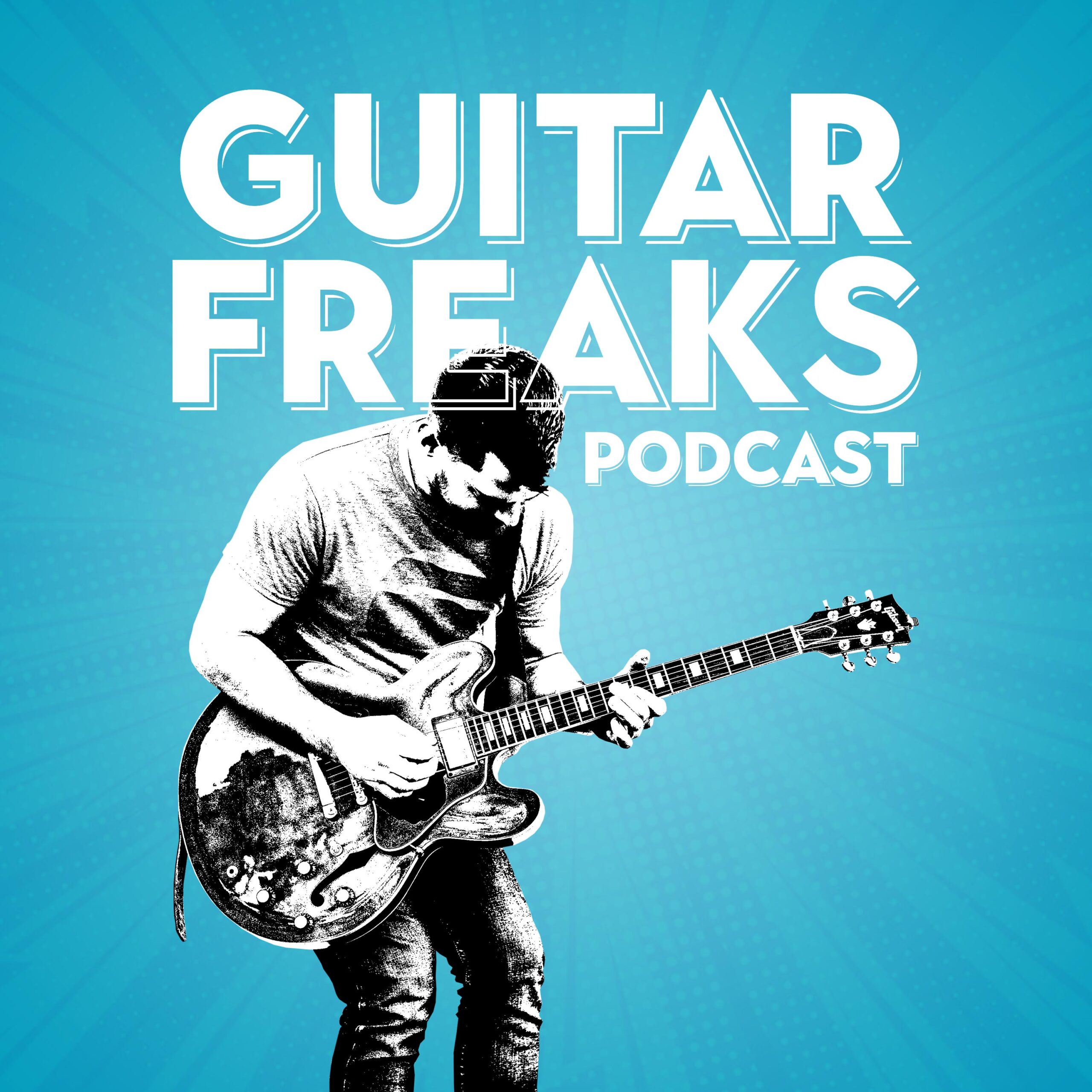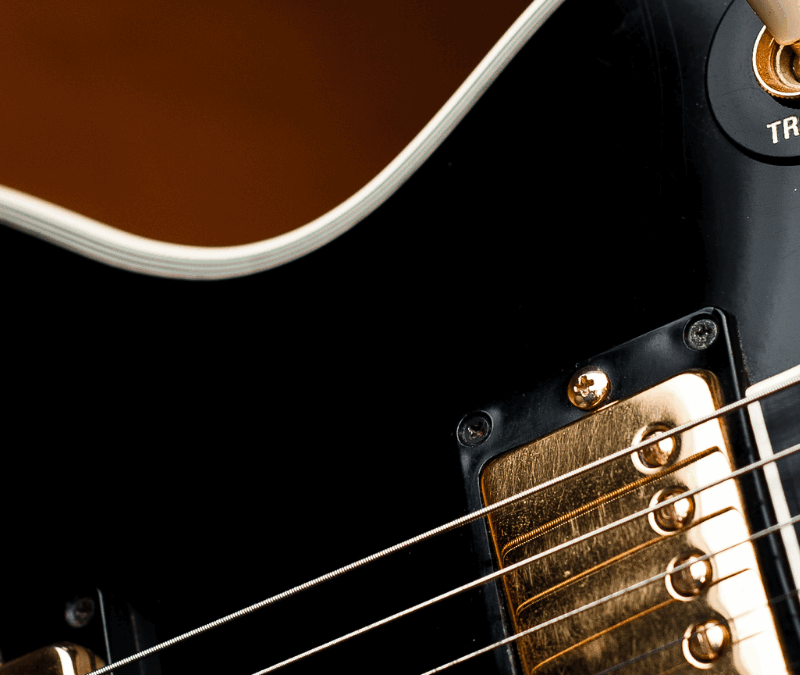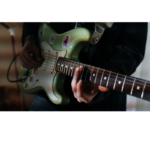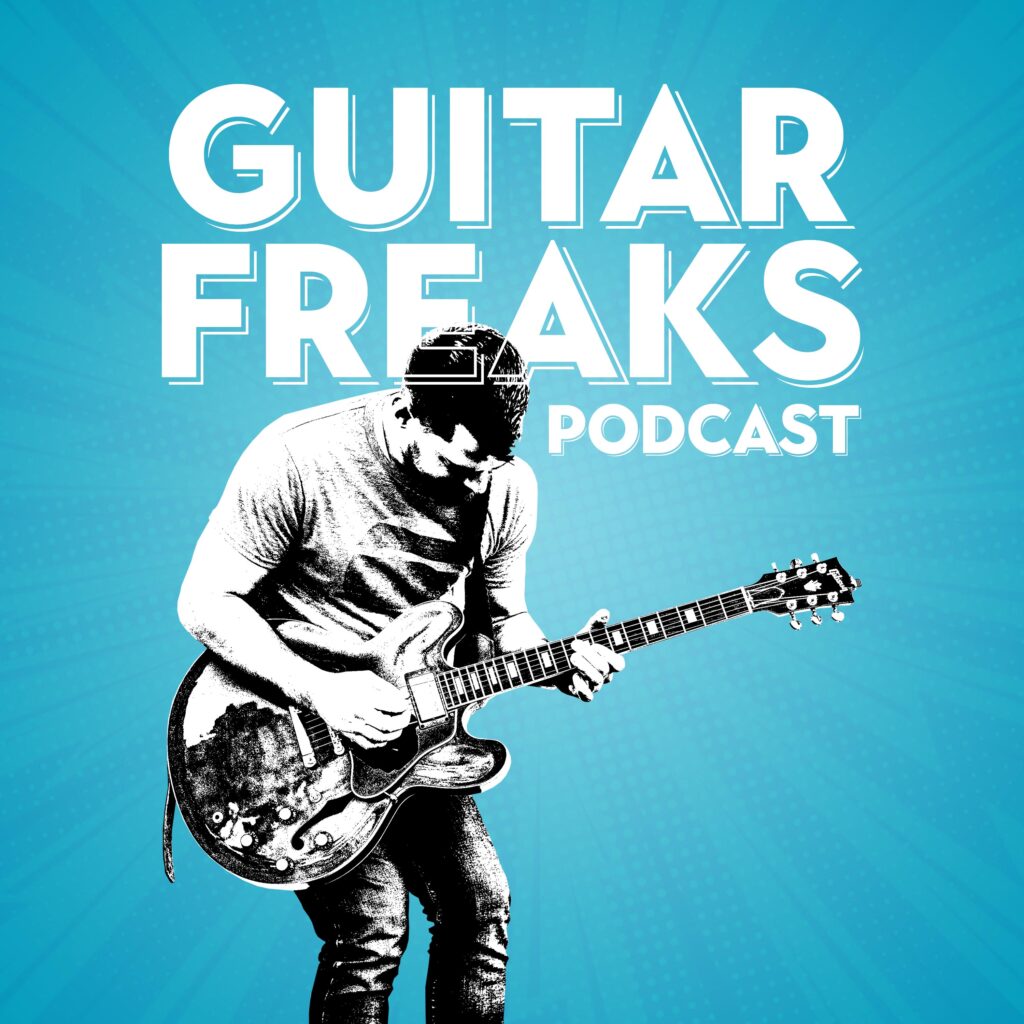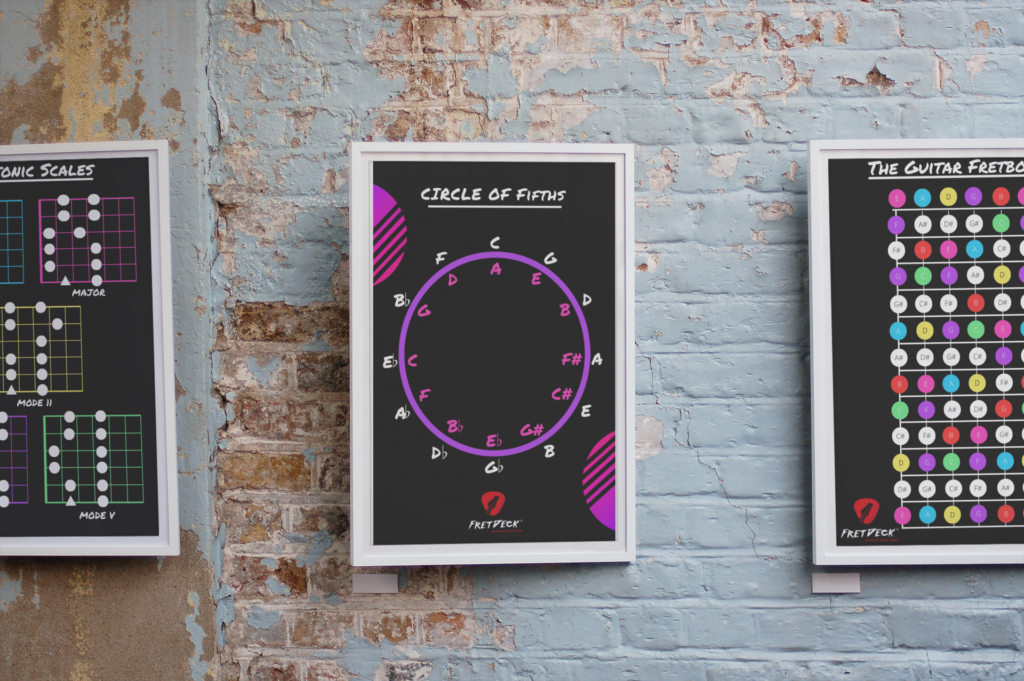If you’re like most guitarists, you’ve probably said this at some point:
“I know a few scale shapes… but I still can’t solo across the neck.”
Or maybe:
“I’ve memorized the five pentatonic boxes, but I don’t feel musical with them.”
You’re not alone. Thousands of players hit a wall when it comes to scales for guitar—not because they’re lazy, but because the way we’ve been taught is broken.
In this post, I want to offer you something better: a clear, musical, and visual approach to learning scales that actually works.
This isn’t a theory lesson. It’s a practical roadmap. And by the end, you’ll know:
- The most important scales for guitar players (and why)
- How to use them to solo, phrase, and write music
- What nobody tells you about connecting scale shapes
- How a simple card-based system called FretDeck helped me (and hundreds of others) master the fretboard
Let’s dig in.
🚫 Why Most Scale Systems Fail (And What to Do Instead)
Here’s the hard truth:
Knowing scale patterns isn’t the same as understanding them.
You can memorize five shapes of the minor pentatonic scale. But unless you know:
- Where the root is
- What intervals you’re playing
- How to connect each position
- How to phrase musically…
…you’ll feel lost when it’s time to solo.
Traditional scale books throw everything at you. But information without context just leads to confusion.
What you need isn’t a bigger book. You need a better map.

❌ Stop Guessing. Start Shredding.
If you’re still fumbling through scale patterns and box shapes… it’s costing you progress.
FretDeck™ is the no-fluff system that shows you exactly how to master the fretboard—fast. Early access.
⚡️ This isn’t for dabblers. It’s for players who want results.
👉 Click here to join the pre-launch now
Early access. Limited rewards. Don’t wait.
🧭 The Three Essential Scales for Guitar (And How to Actually Use Them)
Let’s clear away the clutter. You don’t need to master every exotic scale from Phrygian Dominant to Double Harmonic to start sounding like a real musician.
Here are the 3 scales every guitarist should master first—and exactly how to apply them.
1. Minor Pentatonic Scale
- 🔑 Use it for: Rock, blues, soul, funk, classic solos
- 🔍 Focus on: 5 positions, root on string 6 and 5, minor 3rd for bluesy bends
Practice Prompt: Solo over a 12-bar blues using only pattern 1, then try linking pattern 1 and 2 without stopping. Do this in G, then A, then E.
2. Major Pentatonic Scale
- 🔑 Use it for: Country, gospel, Motown, major-key melodies
- 🎯 Focus on: Smooth phrasing between the 2nd and 6th degrees
Practice Prompt: Play the G major pentatonic (Pattern 2 starting at the 3rd fret) and target the root and 5th during your phrases. Sounds clean and bright.
3. Major Scale (Ionian)
- 🔑 Use it for: Jazz, pop, theory fluency, arpeggios, modes
- 🧠 Focus on: 3-note-per-string shapes and interval awareness
Practice Prompt: Play the G major scale in one position. Now identify the root, 3rd, and 7th on each string. Phrase using just those tones.
Once these are solid, every other scale becomes easier to digest.
But here’s the kicker…
Scales don’t make music. Phrasing does.
And the secret to phrasing is understanding where you are on the fretboard—visually and musically.
🧠 How I Finally Mapped the Neck (And Why It Had Nothing to Do with a Book)
A few years ago, I hit a wall.
I had studied theory. I knew the “rules.” I even taught students.
But when it came to improvising over a chord progression in a key other than A minor or E minor?
I froze.
Then something clicked. I started using scales as navigational tools, not just finger exercises. I mapped the neck using:
- The Circle of 4ths
- Interval relationships
- Chord tone targeting
- Small daily drills—using just one idea at a time
And that’s when I started building my own guitar cards—a visual deck that helped me practice one shape, one key, one position at a time.
Those cards became the FretDeck.
🎴 FretDeck: The Scales for Guitar System That Fits in Your Pocket
Books are great. YouTube is endless. But nothing beats a tactile, simple system you can hold.
FretDeck is a set of guitar scale cards that trains you to:
- See the root notes instantly
- Learn all five modes in every key
- Map the major and minor pentatonic scales
- Visualize intervals across the neck
- Connect chord tones to your scale positions
It’s designed for real-world playing, not theory tests.
Each card includes:
- 🎸 Fretboard diagram (with root/intervals)
- 🔁 Practice prompt
- 🎯 Key signature + mode number
- 🧠 Visual anchor points
🟨 Join the Kickstarter Pre-Launch + Get Bonuses →

❌ Stop Guessing. Start Shredding.
If you’re still fumbling through scale patterns and box shapes… it’s costing you progress.
FretDeck™ is the no-fluff system that shows you exactly how to master the fretboard—fast. Early access.
⚡️ This isn’t for dabblers. It’s for players who want results.
👉 Click here to join the pre-launch now
Early access. Limited rewards. Don’t wait.
🎸 Real Players. Real Progress.
“I used to only solo in A minor. Now I’m jamming in C, F#, and B like it’s nothing.”
– Darren, blues guitarist
“FretDeck made intervals click for me. My solos finally sound like music.”
– Jennifer, jazz student
“Every week I shuffle a few cards and that’s my practice. It’s fun. And it works.”
– Zander, weekend player
📈 How to Practice Scales for Guitar (the Way Pros Do)
🔄 1. Play One Pattern in Multiple Keys
Take pattern 3 of minor pentatonic. Play it in G, then E, then C. Keep the same shape, shift position. This builds your key fluency.
🧱 2. Link Two Patterns Seamlessly
Instead of “jumping” from box to box, connect box 1 and 2 with melodic ideas. Bend through the 2nd, slide to the 4th, land on the root.
🧠 3. Speak and Play
Say the note names or intervals as you play. This builds brain-to-finger connection faster than silent noodling.
👁 4. Visualize
Close your eyes and see where the 3rd is. See the root. See the 5th. If you can imagine it, you can play it.
All of this is baked into the FretDeck system.
🎧 Want to Jam With Other Guitar Nerds? Join Guitar Freaks Hangout (Discord)
We’ve built a private community just for this.
It’s called Guitar Freaks Hangout, and inside you’ll find:
- Weekly scale & solo challenges
- Fretboard theory drop-ins
- Tabs and diagrams from my books (SoloCraft, RhythmCraft)
- Chill, no-ego conversations about tone, technique, and progress
🎸 Join Guitar Freaks Hangout on Discord
Early members get first access to beta-test decks, giveaways, and private lessons.
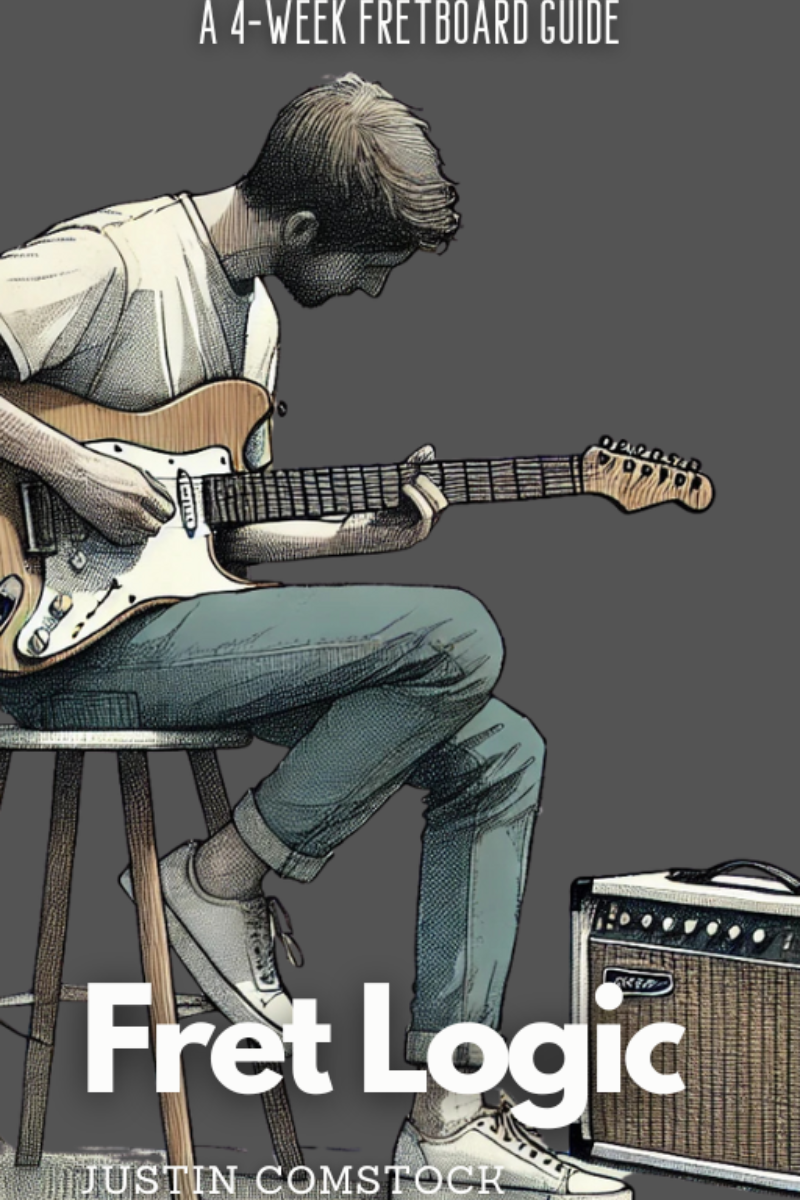
Join Guitar Freaks Hangout on Discord! 🎸
Get Fret Logic FREE!
Join the Guitar Freaks Hangout Discord and get exclusive access to my entire e-book, Fret Logic! Master the fretboard and elevate your solos with this comprehensive guide.
👉 Don’t miss out—join now and download your free copy!
🧭 What Scales for Guitar Really Teach You (If You Learn Them Right)
Let’s reframe the goal.
You’re not learning scales to pass a test.
You’re learning them to:
- Improvise freely
- Build melodies
- Unlock your ears
- Move between chord changes
- Understand what your favorite guitarists are actually doing
Whether it’s B.B. King’s major pentatonic licks, Robben Ford’s altered scale magic, or Hendrix’s hybrid phrasing…
It all comes back to understanding scales as language, not just shapes.
🚨 Recap: The Fretboard Fluency Formula
✅ Learn 3 essential scales
✅ Map them visually (not just by pattern)
✅ Practice 1 idea at a time
✅ Connect intervals, not just positions
✅ Use a modular system like FretDeck
✅ Join a community that supports you
You don’t need more content. You need clarity.
CTA: Stop Guessing. Start Mapping.
If you’ve been overwhelmed by books, frustrated by YouTube, or confused by theory…
There’s a better way.
🎴 FretDeck: The Only Guitar Scale System You’ll Ever Need
🎧 Guitar Freaks Hangout: Your Practice Tribe
Guitar Scale Positions: Unlock the Neck
Guitar Scales on JustinGuitar
